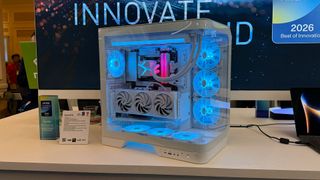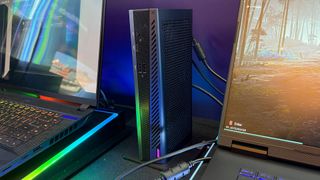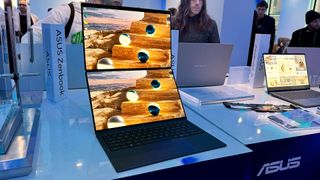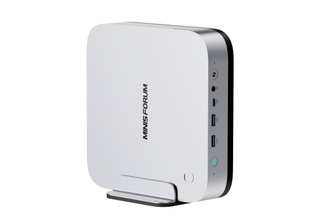News
Explore News
-
Audio News
-
Computing News
-
Earbuds and Airpods News
-
Health & Fitness News
-
News about Cameras
-
News about Fitness Trackers
-
News about Headphones
-
News about Laptops
-
News about Phones
-
News about Small Appliances
-
News about Smartwatches
-
News about Tablets
-
News about The Home
-
News about iPads
-
Smart Home News
-
Television News
Latest about News

MSI focuses on AI and business at CES 2026
By Madeline Ricchiuto published
MSI wants you to know it's more than just a gaming brand

NYT Wordle today — answer and my hints for game #1668, Monday, January 12
By Marc McLaren last updated
Looking for Wordle hints? I can help. Plus get the answers to Wordle today and yesterday.

More than just AI, here are the three Gigabyte CES 2026 products to watch
By Madeline Ricchiuto published
Gigabyte had a lot of amazing devices on display at CES 2026, but these were my favorite by far

These are my four favorite Asus computers from CES 2026
By Madeline Ricchiuto published
Asus had a lot of amazing devices on display at CES 2026, but these were my favorite by far

You won't believe this, but Khadas Mind Pro mini PC actually fits an RTX 5060 Ti graphics card, 64GB RAM, and 2TB NVMe SSD in just 0.43 liters
By Efosa Udinmwen published
CES 2026 New Khadas packs insane hardware into a 0.43 liters capacity, while leaving cooling and thermal management a complete mystery.

Minisforum beats Dell, HP and Lenovo to unveil first Ryzen AI 9 HX470 PC — AI X1 Pro-470 mini PC supports 12TB SSD storage and up to 128GB DDR5
By Wayne Williams published
CES 2026 Minisforum beats Dell, HP and Lenovo to unveil first Ryzen AI 9 HX470 mini PC - AI X1 Pro-470 supports 12TB SSD storage and up to 128GB DDR5.

Past Wordle answers – every solution so far, alphabetical and by date
By Marc McLaren last updated
Knowing past Wordle answers can help with today's game. Here's the full list so far.

Barcelona vs Real Madrid Free Streams: How to Watch Spanish Super Cup Final 2026 From Anywhere in the World, Team News
By Adrian Back last updated
News All the ways to watch Barcelona vs Real Madrid live streams online and from anywhere, as the two bitter rivals compete in the Spanish Super Cup final.

SpaceX gets approval to launch another 7,500 next-gen Starlink satellites
By David Nield published
Starlink will have 15,000 Gen2 satellites in space within the next five years, after a regulatory decision.

Micron announces a QLC SSD just weeks after killing its beloved Crucial brand — the 3610 is a basic Gen5 SSD that's somehow faster than Gen4 TLC
By Efosa Udinmwen published
CES 2026 Micron 3610 PCIe Gen5 NVMe SSD offers high-speed QLC storage, low latency, AI readiness, compact form, and strong endurance.
Sign up for breaking news, reviews, opinion, top tech deals, and more.